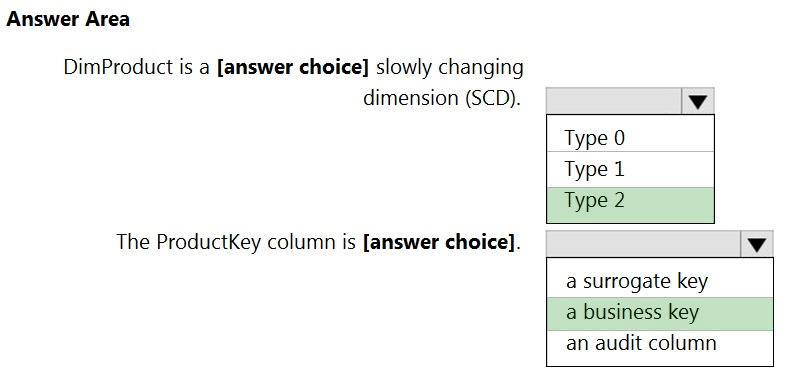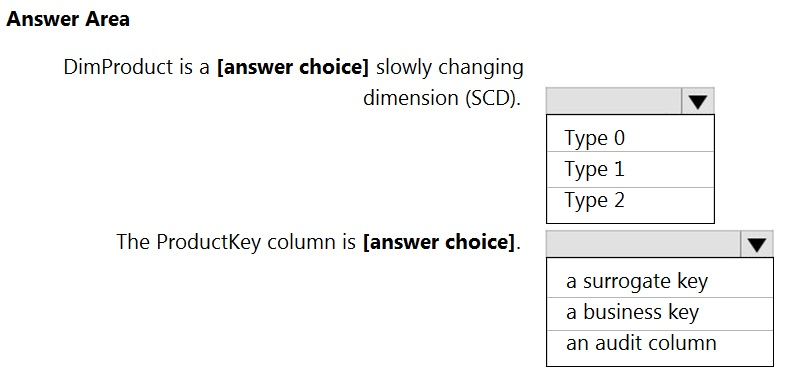
Box 1: Type 2 -
A Type 2 SCD supports versioning of dimension members. Often the source system doesn't store versions, so the data warehouse load process detects and manages changes in a dimension table. In this case, the dimension table must use a surrogate key to provide a unique reference to a version of the dimension member. It also includes columns that define the date range validity of the version (for example, StartDate and EndDate) and possibly a flag column (for example,
IsCurrent) to easily filter by current dimension members.
Incorrect Answers:
A Type 1 SCD always reflects the latest values, and when changes in source data are detected, the dimension table data is overwritten.
Box 2: a business key -
A business key or natural key is an index which identifies uniqueness of a row based on columns that exist naturally in a table according to business rules. For example business keys are customer code in a customer table, composite of sales order header number and sales order item line number within a sales order details table.
Reference:
https://docs.microsoft.com/en-us/learn/modules/populate-slowly-changing-dimensions-azure-synapse-analytics-pipelines/3-choose-between-dimension-types


